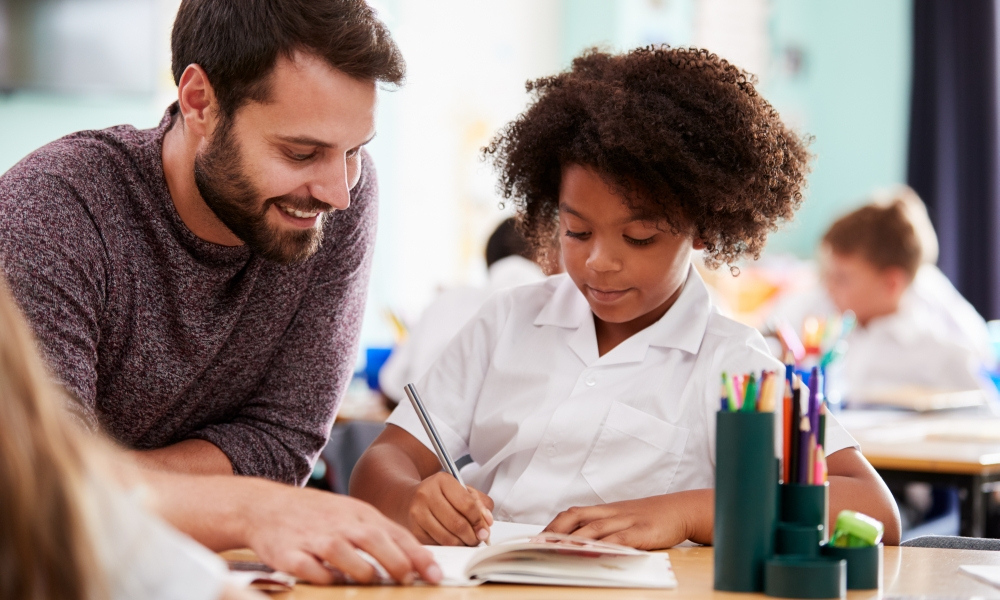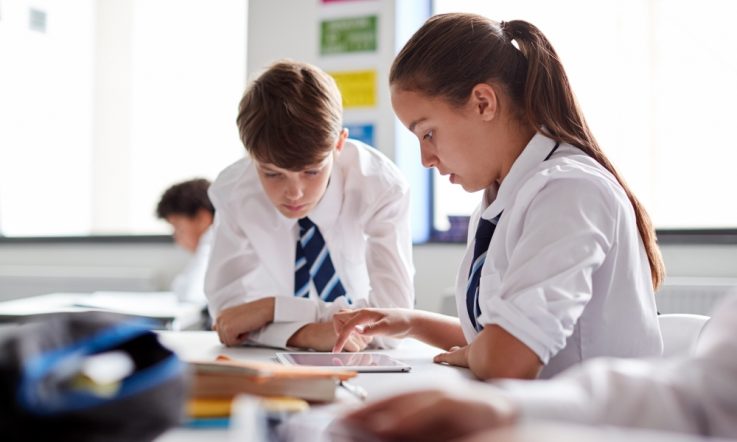Amid all of the important responsibilities of a teacher, one of the most critical constructs to student achievement is support for individual learners. This support is especially needed for students that struggle with specific skills and concepts, including social and emotional learning.
So, how might teachers best support struggling learners in the classroom? As an answer to this singular question, we suggest five principles that can increase results when supporting struggling learners in the elementary grades (primary years).
Know individual students
Effective teachers know their students. Even before explicit instructional modeling, effective teachers know and understand the cognitive and social/emotional launching points of individual students. They know what motivates and excites them to learn at a deeper level.
William Powell and Ochan Kusuma-Powell (2011) assert: ‘Educators understand that the business of coming to know our students as learners is simply too important to leave to chance –and that the peril of not undertaking this inquiry is not reaching a learner at all.' Rather, the most impactful teachers see students not as ‘another face in the crowd', but as individual and unique people with varying differences, strengths, and opportunities for improvement.
Similarly, when individual students know they are cared for and loved by their own teacher, they will typically provide a genuine effort, giving the teacher a clear picture as to the correct level of support to provide the learner. These supports will eventually spur students to become self-directed, critical thinkers that can work interdependently toward common group goals.
Plan according to the developmental levels of students
Planning for and implementing differentiated instruction holds all students accountable for learning at their own readiness level. It also holds the teacher accountable for delivering the planned instruction at those specific levels; thus reaching all learners.
Accurately differentiating instruction is a very challenging pedagogical skill to master. ‘Accuracy' in the planning process means that teachers should start instruction at the present level of development within the classroom. As such, beginning instruction at the correct starting line provides a strong lever for supporting students at the beginning, middle, and end of a lesson.
Above all else, careful planning and tailored instruction communicates to the learner that he or she is important enough to design a customised instructional path that builds on their existing knowledge and skills and addresses their academic and social needs.
Model instruction and follow up with students
Before expecting any learner to work independently or interdependently, effective teachers model via direct or explicit instruction. Grant Wiggins and Jay McTighe (2008) explain: ‘… the teacher's primary goal is to help learners acquire basic information and skills through explicit instruction and modeling.' This process involves the teacher thinking out loud (e.g. like a sports broadcaster announcing the play-by-play) and explicitly demonstrating the learning activity.
For most students, as the lesson progresses, students take responsibility for independently learning or mastering learning. But for the struggling learner, the teacher pivots toward added supports during each phase of the Gradual Release of Responsibility Framework (Pearson & Gallagher, 1983). The severity of struggle demonstrated by students reflects the level of support needed.
Here, the teacher is immediately responsive to the specific struggle by providing scaffolded supports for closing that learning deficit. For example, a research-based support for English learners is to provide visual representations for words students are learning. Used correctly, this strategy can effectively support all learners in all content and grade levels. This implementation of correct leveled supports can be completed by way of the teacher assessing students throughout the planned lesson.
Assess students throughout the lesson
Assessment with students cannot and should not be left to the end of a lesson. Rather, the assessment and monitoring of student understanding should be done throughout. Specifically, each phase of the release of responsibility framework (see above), should include a formative assessment feature.
We recommend assessments such as anecdotal records, observations/notes, strategic questioning, individual student whiteboards, etcetera, so that an immediate response can be implemented by the teacher. This assessment response can effectively direct the learner back to accurate work and an increased understanding of the concept.
Dylan Wiliam (2011) suggests: ‘Assessment functions formatively when it improves the instructional decisions that are made by teachers …' Dependent on the assessment results, these instructional decisions require the teacher to implement support interventions in a thoughtful and purposeful way before a concept will be learned by the student.
Provide consistent one-on-one or small group interventions
All students need targeted instruction. Some students will need higher levels of intervention than others. These interventions will vary from brief interactions to clear up foundational misunderstandings to ones that are intensive, ongoing collaborations that will need consistent and thoughtful implementation.
Regardless of the level of intervention, when students enjoy what happens in an intervention, an increase in their autonomy, self-efficacy, and motivation surfaces, which promotes mastery and competence of academic skills (Schunk, 1996). These interventions should be delivered through small-group instruction using engaging strategies that are responsive to minor student skill deficits. As needed, teachers will also implement a higher-tiered intervention that still targets skill deficits, but benefits the learner with one-on-one, undivided attention. This small group and one-on-one support system should be implemented on an ongoing and routine basis.
These five principles are essential, yet effective ways to get struggling learners the support they need so they are ready for independent and interdependent learning.
Educators may rely on elaborate programs and curriculum software to get students to the next phase of their achievement. However, in reality, the most talented and focused teachers replace these with targeted instruction and specific follow-up needed for struggling students to soar. It is this instruction and critical time spent with individuals that will push them past their struggles and onto new levels of achievement.
References
Pearson, P. D., & Gallagher, M. C. (1983). The instruction of reading comprehension. Contemporary Educational Psychology, 8(3), 317-344.
Powell, W., & Kusuma-Powell, O. (2011). How to teach now: Five keys to personalized learning in the global classroom. Alexandria, VA: ASCD.
Schunk, D. H. (1996). Goal and self-evaluative influences during children's cognitive skill learning. American Educational Research Journal, 33(2), 359-382.
Wiggins, G., & McTighe, J. (2008). Put understanding first. Educational Leadership, 65(8), 36-41.
Wiliam, D. (2013). Assessment: The Bridge between Teaching and Learning. Voices from the Middle. 21(2), 15-20.
How well do you know your own students? How does this inform your planning and teaching?
Bryan Matera and Joel Traver say: ‘Before expecting any learner to work independently or interdependently, effective teachers model via direct or explicit instruction.’ Think about your personal experience. Do you do this in your own teaching?



